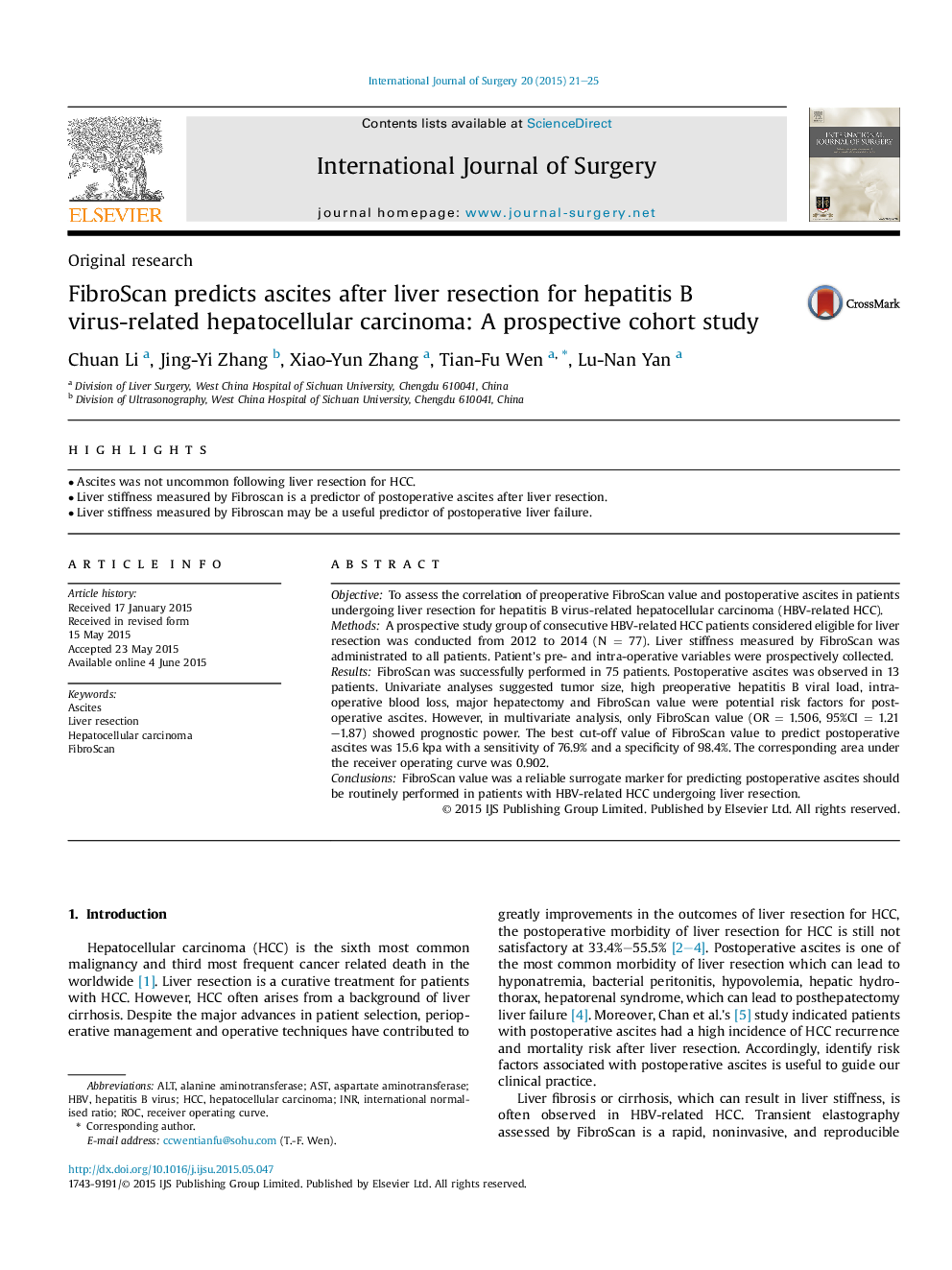| Article ID | Journal | Published Year | Pages | File Type |
|---|---|---|---|---|
| 6251292 | International Journal of Surgery | 2015 | 5 Pages |
â¢Ascites was not uncommon following liver resection for HCC.â¢Liver stiffness measured by Fibroscan is a predictor of postoperative ascites after liver resection.â¢Liver stiffness measured by Fibroscan may be a useful predictor of postoperative liver failure.
ObjectiveTo assess the correlation of preoperative FibroScan value and postoperative ascites in patients undergoing liver resection for hepatitis B virus-related hepatocellular carcinoma (HBV-related HCC).MethodsA prospective study group of consecutive HBV-related HCC patients considered eligible for liver resection was conducted from 2012 to 2014 (NÂ =Â 77). Liver stiffness measured by FibroScan was administrated to all patients. Patient's pre- and intra-operative variables were prospectively collected.ResultsFibroScan was successfully performed in 75 patients. Postoperative ascites was observed in 13 patients. Univariate analyses suggested tumor size, high preoperative hepatitis B viral load, intraoperative blood loss, major hepatectomy and FibroScan value were potential risk factors for postoperative ascites. However, in multivariate analysis, only FibroScan value (ORÂ =Â 1.506, 95%CIÂ =Â 1.21-1.87) showed prognostic power. The best cut-off value of FibroScan value to predict postoperative ascites was 15.6Â kpa with a sensitivity of 76.9% and a specificity of 98.4%. The corresponding area under the receiver operating curve was 0.902.ConclusionsFibroScan value was a reliable surrogate marker for predicting postoperative ascites should be routinely performed in patients with HBV-related HCC undergoing liver resection.
